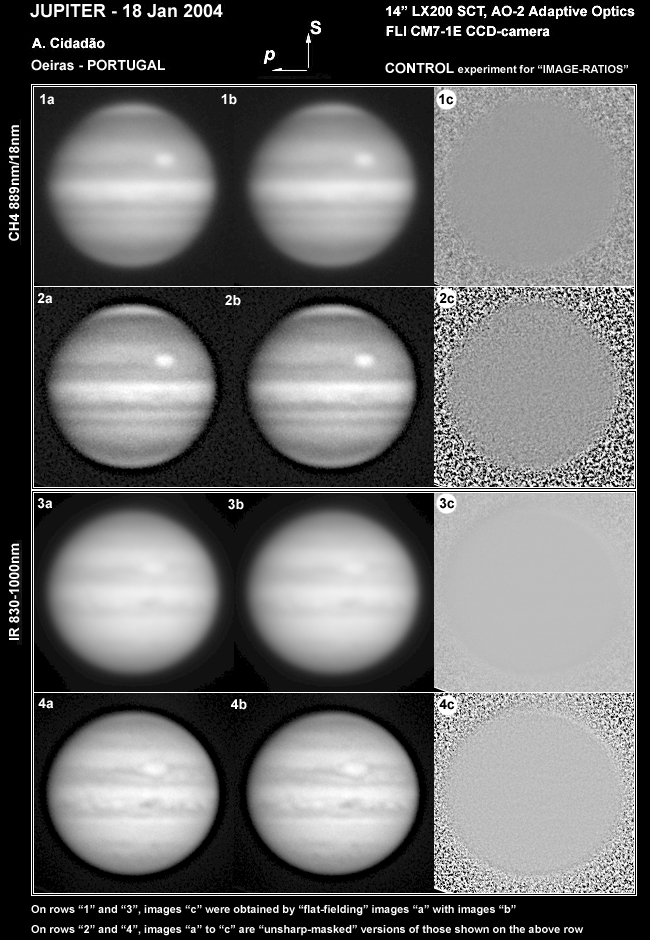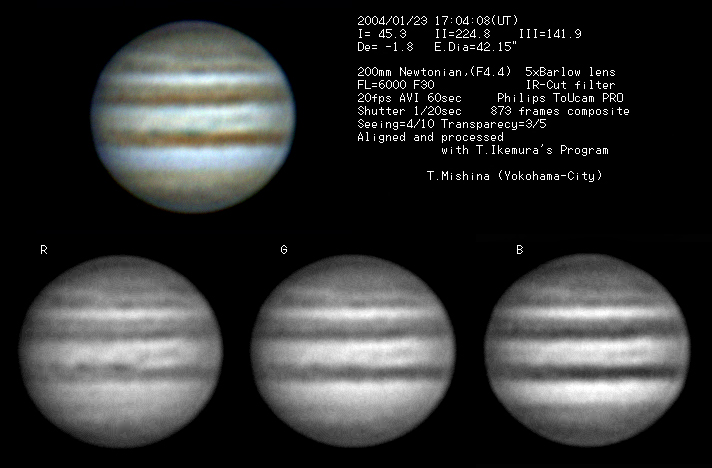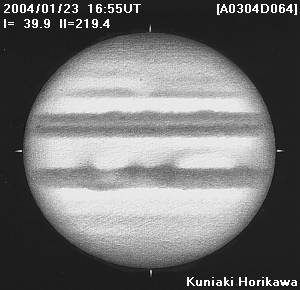|
Antonio Cidadao (250mm LX200SCT : FLICM7 1E CCD camera)
|
Hi all
Here is Jan 23 IR-CH4 data, where the methane sets used for ratios were
LOG-processed (this way the shape of the planetary disk is similar to
broarband IR and visible light, facilitating limb recognition for
quantiative positioning of features, and there is a better contrast on
ratios, e.g. NTB).
Besides things mentioned on previous images, the darkest NEBs projection is
seen faintly dark in the ratio, and there are faintly bright clouds
following the GRS, which do not show well on each of the methane images (in
contrast to occasional high-altitude clouds on the disturbance, that when
present are seen quite well).
I also attach a control experiment for image ratios, with sequences where
all images were always obtained with the same filters. Specifically
alternating images on sequence obtained with a methane filter (889nm/18nm)
and a broadband IR filter (830-1000nm), were averaged to produce two final
images per sequence (images "a" and "b" of rows 1 and 3 in the plate). Then
the image "a" was flat-fielded using image "b", originating image "c".
Unsharp-masked versions of all these images are shown in rows 2 and 4.
The only difference from the actual "ratio-images" is that on this control
the filter remained the same per sequence, and the emerging pattern in
images "c" is, as expected, an uniform field containing noise that is more
evident in the sky background.
Good observations

 280mm C11+ST-237 CCD camera
≪アントニオ シダダオ ポルトガル≫
[Antonio Cidadao Oeiras - Portugal]
280mm C11+ST-237 CCD camera
≪アントニオ シダダオ ポルトガル≫
[Antonio Cidadao Oeiras - Portugal]
|





280mm C11+ST-237 CCD camera ≪アントニオ シダダオ ポルトガル≫ [Antonio Cidadao Oeiras - Portugal]

 ALPO-Japan Latest
ALPO-Japan Latest

 Jupiter Section
Jupiter Section